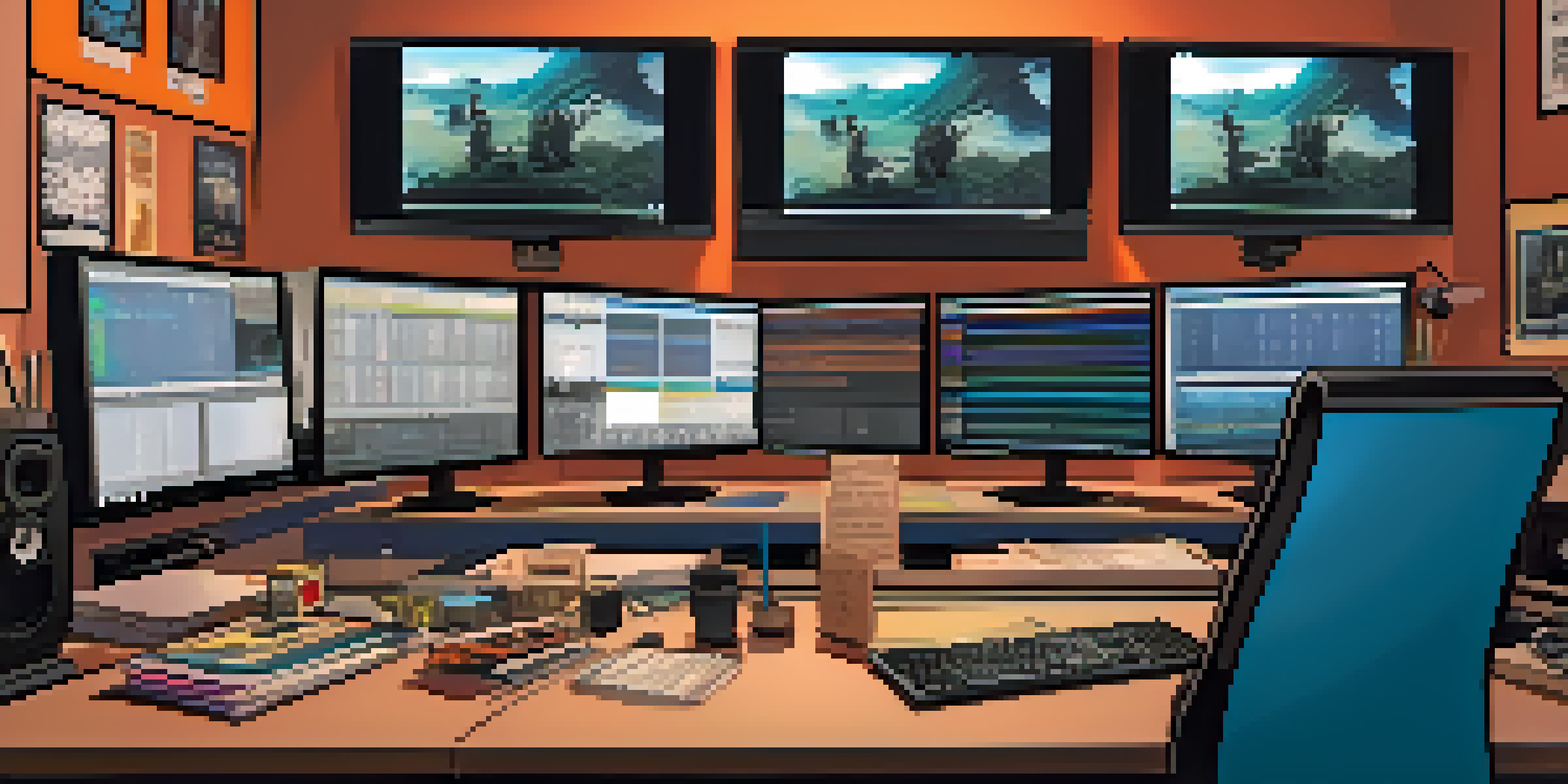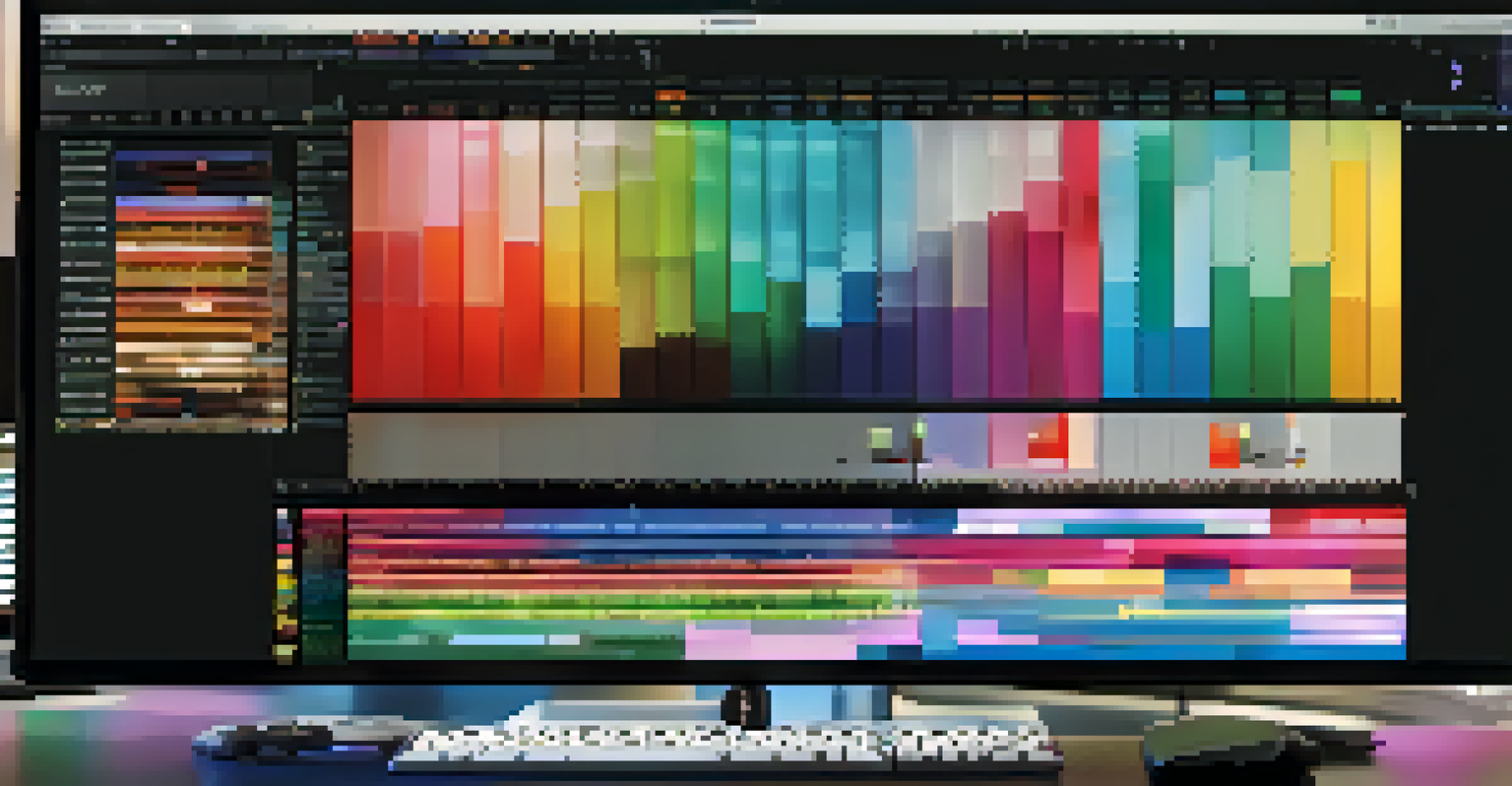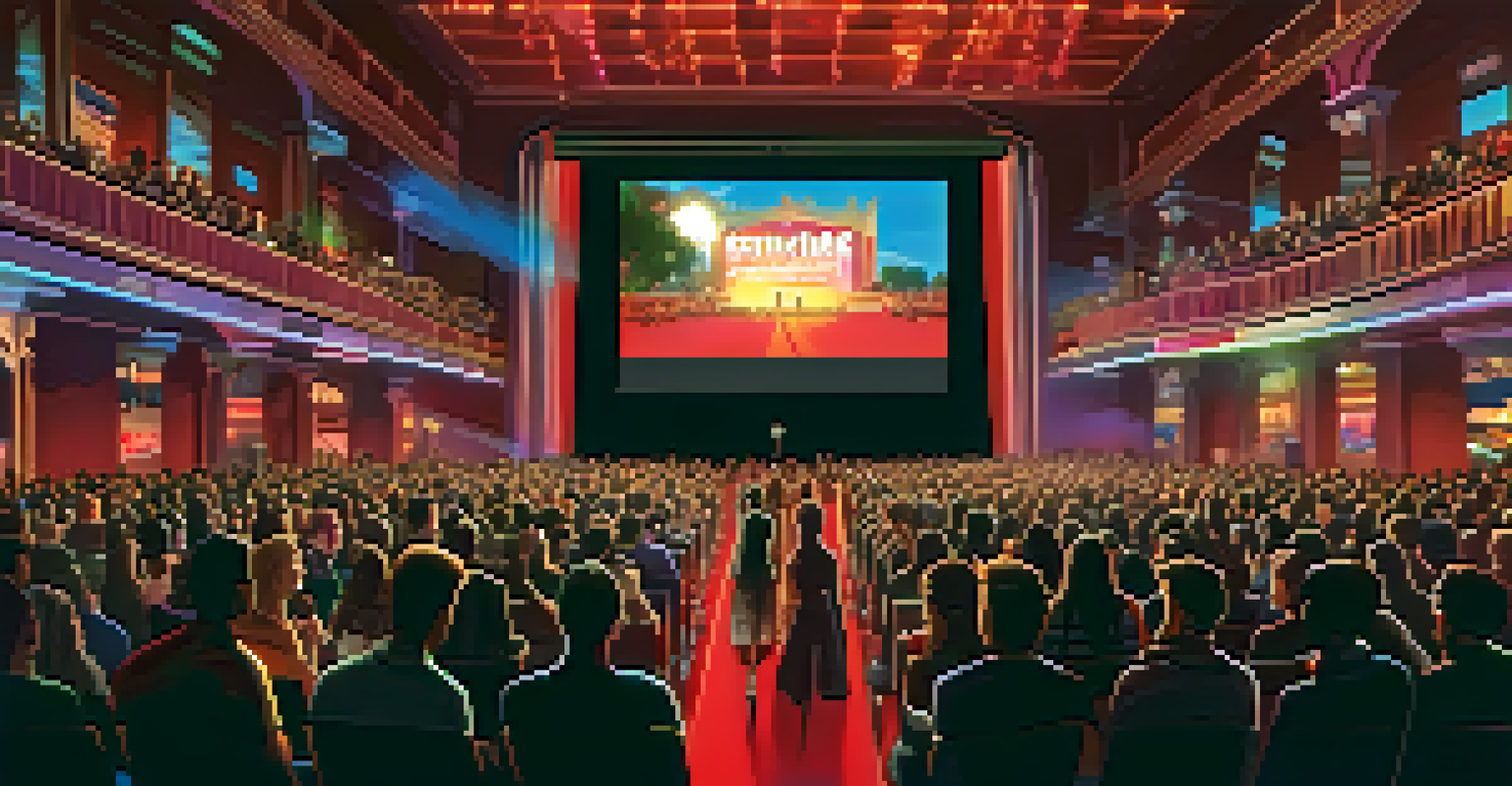The Importance of Rhythm and Pacing in Film Editing

Understanding Rhythm in Film Editing
Rhythm in film editing refers to the tempo and flow of the footage, much like music. Just as a song has beats that create a sense of movement, film cuts can establish a rhythm that guides viewers emotionally. This rhythm can evoke feelings of excitement, suspense, or calm, depending on how the editor chooses to arrange the shots.
Editing is the only art form that is exclusively a collaborative effort. It’s about the dialogue between the editor and the director, as well as the other creative voices in the filmmaking process.
For example, a fast-paced action scene might use quick cuts to create tension and urgency, making audiences feel on the edge of their seats. Conversely, a slower-paced scene might linger on a character’s expression to build emotional depth. Editors must carefully consider how the rhythm affects the audience's perception of the story.
Ultimately, rhythm helps to create a cohesive viewing experience. It ensures that the audience remains engaged and connected to the narrative, allowing them to feel the intended emotions at the right moments.
The Role of Pacing in Storytelling
Pacing is the speed at which a story unfolds and is closely tied to rhythm but focuses more on the timing of scenes and transitions. A well-paced film maintains a balance between fast and slow moments, ensuring the audience is neither overwhelmed nor bored. This balance is crucial for keeping viewers invested in the characters and plot.

For instance, a dramatic build-up might require a slower pace to allow tension to mount, while a climactic moment could benefit from a rapid pace to heighten excitement. Editors often use pacing to manipulate time, creating a sense of urgency or allowing for reflection, depending on the narrative needs.
Rhythm Shapes Emotional Experience
The rhythm in film editing influences viewers' emotional responses, guiding them through excitement, suspense, or calm.
In essence, effective pacing is about knowing when to draw out a scene and when to cut it short. This skill can transform a good film into a great one, as it directly influences how audiences experience the story.
Creating Emotional Impact Through Editing
The emotional impact of a film is often shaped by how rhythm and pacing are utilized during editing. By controlling the tempo of scenes, editors can amplify feelings such as joy, sadness, or fear. For instance, a sudden cut to a shocking event can jolt viewers, eliciting a strong emotional response.
In film, rhythm and pacing are everything. They dictate how the audience feels and reacts to a scene.
Additionally, the juxtaposition of scenes with different rhythms can create a powerful contrast that deepens emotional resonance. Imagine a scene of a joyful reunion immediately followed by a heartbreaking moment; the shift in pacing can leave audiences reeling and deeply affected.
By carefully orchestrating these elements, editors not only tell a story but also evoke a visceral response from viewers. This emotional connection is what makes films memorable and impactful, long after the credits roll.
The Importance of Timing in Editing
Timing is a critical component of both rhythm and pacing in film editing. It involves deciding how long each shot should be held before transitioning to the next, influencing the film's overall flow. Proper timing can enhance comedic moments or build tension in suspenseful scenes, making it an essential skill for editors.
For example, a perfectly timed punchline can lead to laughter, while a delayed reaction shot can heighten suspense. Editors often experiment with different timings to find the sweet spot that resonates with the audience, ensuring that each moment lands as intended.
Pacing Balances Storytelling Flow
Effective pacing ensures a balanced storytelling experience, allowing audiences to remain engaged without feeling rushed or bored.
Ultimately, timing is about precision and intuition, requiring editors to understand not just the mechanics of film but also the emotional journey of the viewer. Mastering this aspect can significantly elevate the storytelling in any film.
The Influence of Genre on Rhythm and Pacing
Different film genres often dictate specific rhythms and pacing styles. For instance, a horror film may rely on slower pacing to build tension and create anticipation, while a comedy might favor quick cuts to enhance the humor. Understanding these genre conventions helps editors make informed decisions about how to shape the film's narrative.
For example, action films typically feature rapid edits to maintain adrenaline levels, while dramas might employ longer takes to allow for character development and emotional depth. This genre-based approach can guide editors in establishing an appropriate rhythm that aligns with audience expectations.
By recognizing the unique demands of each genre, editors can tailor their techniques to enhance storytelling effectively. This adaptability is key to crafting films that resonate with audiences across various platforms.
Techniques for Mastering Rhythm and Pacing
Editors utilize a variety of techniques to master rhythm and pacing in their projects. One common method is the use of 'cutting on action,' where a shot transitions during a character's movement, creating a seamless flow that maintains energy. This technique helps to keep viewers engaged and the story moving forward.
Additionally, editors often employ pacing techniques such as 'building to a climax,' where scenes gradually increase in intensity leading up to a pivotal moment. This approach effectively guides audience emotions and anticipation, making the climax hit harder.
Collaboration Enhances Editing Quality
The collaborative nature of film editing fosters innovative choices that align rhythm and pacing with the director's vision.
Experimenting with different editing styles and techniques allows editors to discover what works best for each scene. Continuous practice and analysis of successful films can enhance an editor’s ability to create compelling rhythms and pacing that captivate audiences.
The Collaborative Nature of Editing in Film
Film editing is not a solitary endeavor; it thrives on collaboration among various creative professionals. Editors work closely with directors, cinematographers, and sound designers to ensure that rhythm and pacing align with the film's vision. This teamwork fosters a holistic approach to storytelling.
For instance, a director may have a specific vision for a scene's emotional impact, and it’s the editor’s job to translate that vision into the final cut. This back-and-forth communication can lead to innovative editing choices that enhance the overall narrative.

Collaboration also allows editors to receive feedback and refine their work, leading to a stronger final product. By embracing this teamwork, editors can ensure that rhythm and pacing serve the story effectively, creating a cohesive and compelling film.